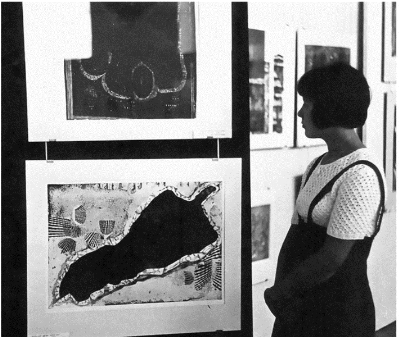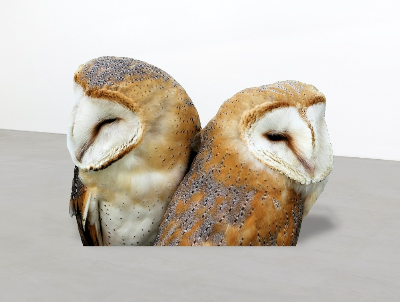
© https://socialistexhibitions.com
У столиці Естонії триває 19-та Талліннська трієнале графіки — одна з найдавніших мистецьких подій Балтії, започаткована ще у 1968 році. Виставка триває до 31 серпня у павільйоні Ласнамяє та на інших локаціях міста, цього року отримала несподіваний фокус: медіаархеологія і роль графічного мистецтва в епоху «короткої пам’яті». Кураторка Маріка Агу пропонує глядачеві подивитися на графіку як на інструмент збереження — у протиставленні до цифрового світу, який «створений, аби забувати». Ідея походить із особистого спостереження: сучасна культура дедалі швидше споживає візуальний контент, але майже не залишає його у колективній чи біологічній пам’яті. «Чи можливо змінити цю ситуацію? Як впоратися з браком простору в нашій свідомості? Це виклик нашого часу», — зазначає Агу. Серед відповідей — погляд у несподівані місця: від друкарських матриць минулого до мікросхем сучасності. Художник Алґірдас Яккас, наприклад, пропонує уважніше придивитися до схем і плат, які керують нашим цифровим середовищем, аби зрозуміти й водночас протистояти їхній привабливості. Міжнародна експозиція трієнале вже привернула увагу не лише митців, а й філософів та культурологів: питання про те, чи здатне аналогове мистецтво стати опорою для людської пам’яті в добу цифрових перевантажень, звучить сьогодні особливо гостро. Фінальний акорд відбудеться 29 серпня у Культурному центрі Ліндаківі — це буде вечір експериментальних творів, що поєднають звук, відеоарт і поетичне слово. Така форма підсумку підкреслює головну ідею трієнале: у світі швидкоплинного зображення мистецтво графіки може запропонувати глибше й триваліше відлуння пам’яті.
Tallinn Print Triennial: The Art of Memory in the Age of Digital Forgetting
The 19th Tallinn Print Triennial — one of the Baltic region’s oldest art events, first launched in 1968 — is currently underway in the Estonian capital. Running until 31 August at the Lasnamäe Pavilion and other venues across the city, this year’s edition has taken on an unexpected focus: media archaeology and the role of graphic art in an era of “short memory.” Curator Marika Agu invites audiences to see printmaking as a tool of preservation — in contrast to the digital world, which, she argues, is “designed to forget.” The concept stems from a personal observation: contemporary culture consumes visual content at an ever-increasing pace, yet leaves little trace in either collective or biological memory. “Is it possible to change this situation? How can we cope with the lack of space in our minds? This is one of the defining challenges of our time,” Agu notes. Among the possible answers are new perspectives on unlikely sources: from the printing matrices of the past to the circuit boards of today. Lithuanian artist Algirdas Jakas, for instance, suggests that by looking closely at the schematics and boards shaping our digital environment, we might better understand them — and resist their allure. The international exhibition has already drawn the attention not only of artists but also of philosophers and cultural theorists, raising a pressing question: can analogue art provide an anchor for human memory in an age of digital overload?
The Triennial will culminate on 29 August at the Lindakivi Cultural Centre with an evening of experimental works blending sound, video art, and spoken word. This finale underscores the core message of the event: in a world of fleeting images, printmaking may still offer a deeper and more lasting echo of memory.

©
2447